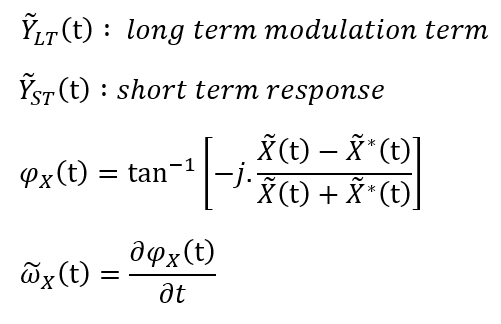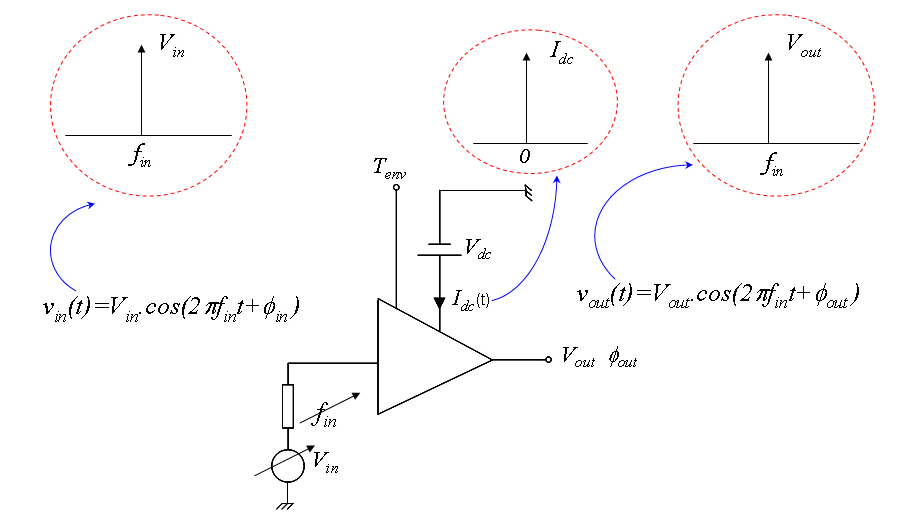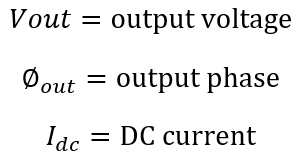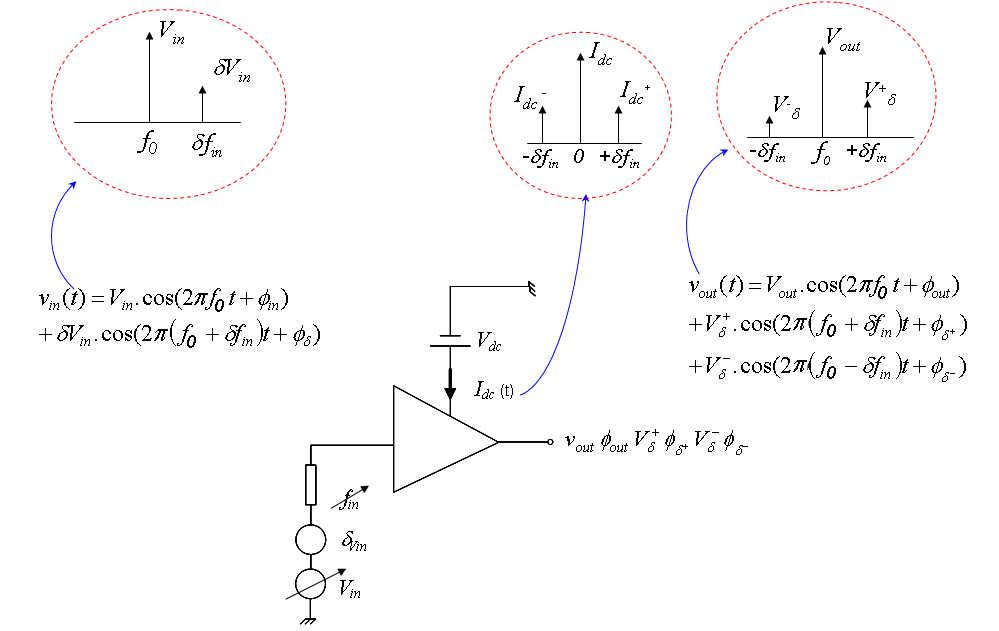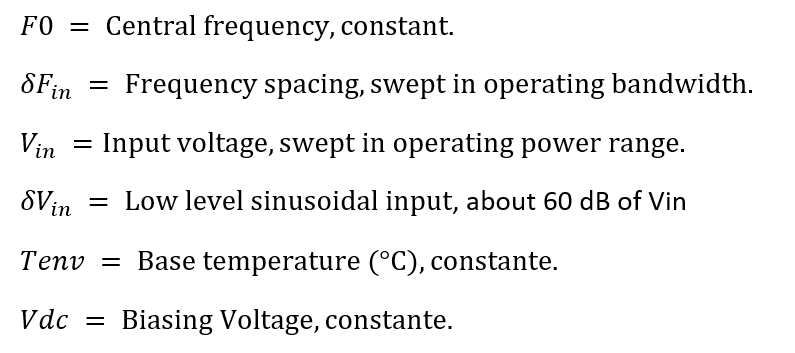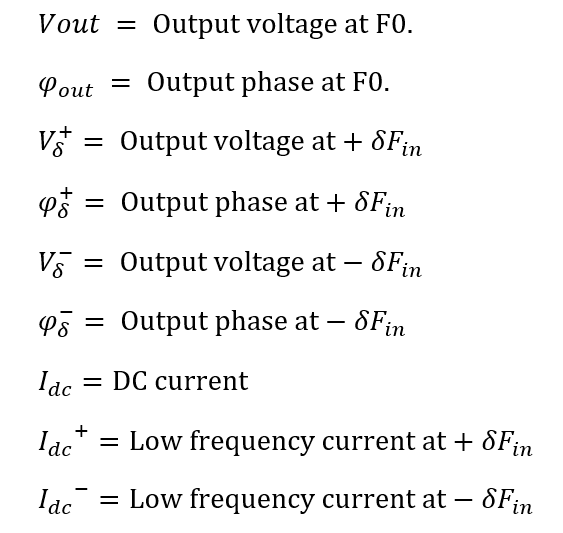U-HFLF model
Unilateral type model: ie it has an input impedance and a fixed output impedance equal to 50 ohms.
High and low frequency memory model: i.e. that it also probes the effects of frequency dispersion caused by long-term phenomena such as polarization or self-heating effects, as well as dispersion effects directly produced in the operating band.
Mathematical description.

Where :
The extraction process consists in identifying the model kernels and calculating the functions of approximation in power (by splines) and in frequency ("Polynomial function" or "Poles and Residues").
For more details one can consult the references:
Identification principle.
The principle of identification is in two phases:1-tone characterization followed by 2-tones characterization.
- 1-tone characterization
Input quantities :
Output quantities :
- 2-tones characterization
Input quantities :
Output quantities :
Validity domain.
The HPA-U-HF-LF is the most complete unilateral amplifier model. It unites the strengths of the HPA-U-HF and HPA-U-LF models and eliminates their limitations. Its extraction requires a heavier characterization, namely, a series of CW 1 ton measurements followed by a series of 2-tone measurements of the component. This model makes it possible to represent fairly long-term memory effects (polarization, thermal, trap) and short-term effects. This model is therefore suitable for almost all applications (narrowband, wideband, variable envelope, radar, etc.). Like the HPA-U-HF and HPA-U-BF models, it does not take into account load impedance changes.

